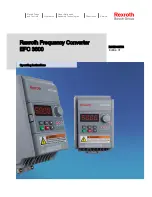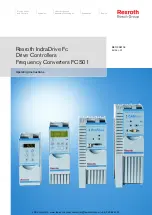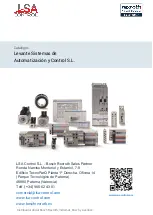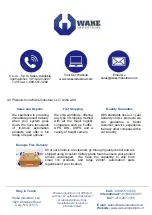
Tuning ASDA-A3
5-20
Revision December, 2017
5
5.5 Tuning in Manual mode
The selection of the position and speed response frequency should be determined by the
machinery stiffness and the application. Generally, for applications or machines that require high
speed and high precision, higher frequency response bandwidth is required. However,
increasing the response bandwidth might cause resonance. Thus, machinery with higher
stiffness is used to solve this problem. When the resonance frequency is unknown, you can
gradually increase the gain parameter values to increase the frequency resonance bandwidth.
Then, decrease the gain parameter values until you hear the sound of the resonance. The
following are the descriptions of the gain adjustment parameters.
Position control gain (KPP, parameter P2.000)
This parameter determines the response of the position loop. The bigger the KPP value,
the higher the response frequency of the position loop. This lowers following error and
position error, and shortens the settling time. However, if you set the value too high, it
can cause the machinery to vibrate or cause overshoot when positioning. The
calculation of position loop frequency response is as follows:
Frequency response bandwidth of position loop (Hz) =
KPP
2π
Speed control gain (KVP, parameter P2.004)
This parameter determines the response of speed loop. The bigger the KVP value,
the higher the response frequency of the speed loop and the lower the following error.
However, if you set the value too high, it could cause machinery resonance. The
response frequency of the speed loop must be 4–6 times higher than the response
frequency of the position loop; otherwise, the machinery might vibrate or it might cause
overshoot when positioning. The calculation of speed loop frequency response is as
follows:
Frequency response bandwidth of speed loop
fv =
�
KVP
2π �
×
�
(1 + P1
−
37/10)
(1 + JL/JM)
�
Hz
JM: Motor Inertia; JL: Load Inertia; P1.037: 0.1 (times)
When P1.037 (auto estimation or manually set value) is equal to the real inertia ratio (JL
/ JM), the real speed loop frequency response is:
fv =
�
KVP
2π �
Hz
Speed integral compensation (KVI, parameter P2.006)
The higher the KVI value, the better the elimination of the deviation. However, if you set
the value too high, it can cause the machinery to vibrate. It is suggested that you set the
value as follows:
KVI ( P2.006)
≤
1.5 × Speed loop frequency response
Содержание ASD-A3-0121
Страница 13: ...Revision December 2017 This page is intentionally left blank...
Страница 43: ...Installation ASDA A3 2 20 Revision December 2017 2 This page is intentionally left blank...
Страница 105: ...Wiring ASDA A3 3 62 Revision December 2017 3 This page is intentionally left blank...
Страница 187: ...Operation Mode ASDA A3 6 36 Revision December 2017 6 This page is intentionally left blank...
Страница 467: ...Parameters ASDA A3 8 210 Revision December 2017 8 This page is intentionally left blank...
Страница 483: ...MODBUS Communication ASDA A3 9 16 Revision December 2017 9 This page is intentionally left blank...
Страница 577: ...Specifications ASDA A3 A 28 Revision December 2017 A This page is intentionally left blank...
Страница 597: ...Accessories ASDA A3 B 20 Revision December 2017 B This page is intentionally left blank...
Страница 603: ...4 Revision December 2017 This page is intentionally left blank...
















































